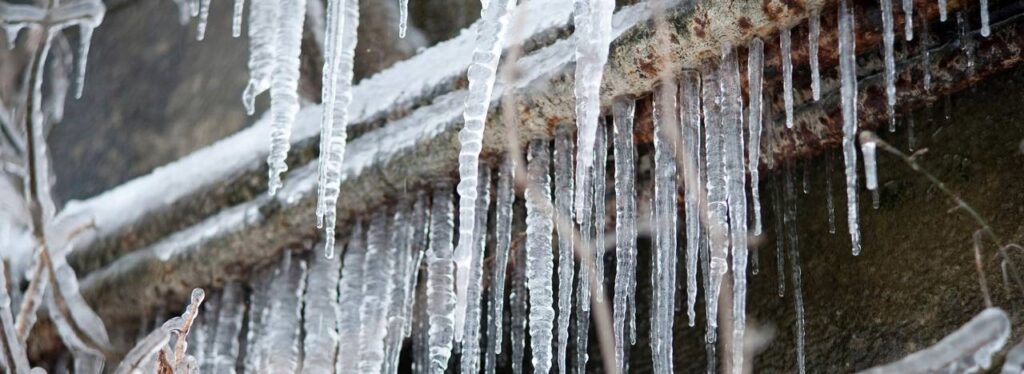Ways to Protect Pipes from Cold Weather Issues: Crucial Guidance
Ways to Protect Pipes from Cold Weather Issues: Crucial Guidance
Blog Article
This article underneath on the subject of Preventing and dealing with frozen pipes is extremely compelling. You should take a peek.

Winter can damage your plumbing, particularly by freezing pipelines. Below's just how to avoid it from occurring and what to do if it does.
Introduction
As temperature levels decrease, the danger of frozen pipelines boosts, possibly bring about pricey repairs and water damage. Comprehending just how to stop icy pipelines is critical for house owners in chilly climates.
Understanding Icy Pipelines
What triggers pipes to ice up?
Pipes freeze when subjected to temperatures listed below 32 ° F (0 ° C) for prolonged periods. As water inside the pipelines ices up, it increases, putting pressure on the pipe wall surfaces and possibly creating them to break.
Threats and problems
Frozen pipelines can result in supply of water disruptions, residential or commercial property damages, and expensive fixings. Burst pipes can flooding homes and cause substantial structural damages.
Signs of Frozen Water Lines
Identifying frozen pipelines early can stop them from rupturing.
Exactly how to identify frozen pipes
Try to find decreased water flow from faucets, uncommon odors or noises from pipelines, and visible frost on subjected pipes.
Prevention Tips
Insulating susceptible pipelines
Cover pipelines in insulation sleeves or utilize warmth tape to shield them from freezing temperatures. Focus on pipelines in unheated or external locations of the home.
Home heating strategies
Maintain indoor areas appropriately warmed, particularly locations with pipes. Open cabinet doors to permit cozy air to flow around pipelines under sinks.
Safeguarding Outdoor Pipes
Garden hoses and outdoor taps
Detach and drain pipes yard hoses prior to winter months. Set up frost-proof faucets or cover outside taps with protected caps.
What to Do If Your Pipes Freeze
Immediate activities to take
If you think icy pipes, maintain taps open up to ease stress as the ice melts. Make use of a hairdryer or towels soaked in hot water to thaw pipes gradually.
Long-Term Solutions
Architectural adjustments
Take into consideration rerouting pipelines far from exterior walls or unheated areas. Add additional insulation to attic rooms, cellars, and crawl spaces.
Updating insulation
Invest in high-grade insulation for pipelines, attics, and walls. Proper insulation helps preserve regular temperatures and lowers the danger of icy pipes.
Conclusion
Protecting against icy pipelines needs proactive measures and quick responses. By understanding the reasons, indicators, and safety nets, house owners can secure their plumbing during winter.
5 Ways to Prevent Frozen Pipes
Drain Outdoor Faucets and Disconnect Hoses
First, close the shut-off valve that controls the flow of water in the pipe to your outdoor faucet. Then, head outside to disconnect and drain your hose and open the outdoor faucet to allow the water to completely drain out of the line. Turn off the faucet when done. Finally, head back to the shut-off valve and drain the remaining water inside the pipe into a bucket or container. Additionally, if you have a home irrigation system, you should consider hiring an expert to clear the system of water each year.
Insulate Pipes
One of the best and most cost-effective methods for preventing frozen water pipes is to wrap your pipes with insulation. This is especially important for areas in your home that aren’t exposed to heat, such as an attic. We suggest using foam sleeves, which can typically be found at your local hardware store.
Keep Heat Running at 65
Your pipes are located inside your walls, and the temperature there is much colder than the rest of the house. To prevent your pipes from freezing, The Insurance Information Institute suggests that you keep your home heated to at least 65 degrees, even when traveling. You may want to invest in smart devices that can keep an eye on the temperature in your home while you’re away.
Leave Water Dripping
Moving water — even a small trickle — can prevent ice from forming inside your pipes. When freezing temps are imminent, start a drip of water from all faucets that serve exposed pipes. Leaving a few faucets running will also help relieve pressure inside the pipes and help prevent a rupture if the water inside freezes.
Open Cupboard Doors
Warm your kitchen and bathroom pipes by opening cupboards and vanities. You should also leave your interior doors ajar to help warm air circulate evenly throughout your home.

I am just very fascinated with Prevent Frozen Pipes and I'm hoping you appreciated our post. If you liked our blog posting if you please do not forget to pass it around. Many thanks for being here. Don't forget to pay a visit to our site back soon.
Request An Appointment Report this page